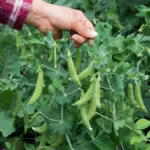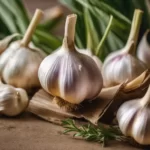Propagating raspberries is a rewarding endeavor for any gardener. It’s not only an economical way to expand your raspberry patch but also a great method to share the delicious bounty of these berries with family and friends. In this article, we will explore the art of raspberry propagation, providing you with the knowledge and techniques needed to multiply your raspberry plants and enjoy a bountiful harvest. Whether you’re a seasoned gardener or just starting, propagating raspberries is a skill worth acquiring.
Types of Raspberry Propagation
Raspberry propagation comes in several forms, each with its unique advantages. Let’s delve into the most common methods:
- Tip Layering: This method involves bending and burying a young raspberry cane, encouraging it to produce new roots. It’s a simple and effective way to create new raspberry plants from existing canes.
- Root Cuttings: Root cuttings involve taking portions of the raspberry plant’s roots and growing them into new plants. This method is suitable for propagating raspberries with well-established root systems.
- Division: Division is a technique where you divide an established raspberry plant into multiple plants. It’s particularly useful for rejuvenating older raspberry canes and promoting their vitality.
When to Propagate Raspberries
The timing of raspberry propagation is crucial for success. It’s best to propagate raspberries during late winter or early spring when the plants are still dormant. The exact timing may vary based on your climate and region, but the goal is to work before the raspberry plants begin active growth. This allows the new plants to establish themselves before the growing season kicks in. So, keep an eye on your local climate and the behavior of your raspberry canes to determine the best time for propagation. With these foundational points in mind, let’s explore the specifics of each propagation method.
Preparing for Propagation
Before you embark on raspberry propagation, it’s essential to gather the right tools and materials. You’ll need a sharp pair of pruning shears or scissors for clean cuts, a small shovel or garden spade for digging, and well-draining soil with organic matter to create the best conditions for your new raspberry plants. Additionally, ensure you have a water source nearby for irrigation. It’s also crucial to start with healthy parent plants, free from diseases or pests. Healthy parents will yield healthy offspring. With the right tools, soil, and healthy plants, you’re all set to begin your raspberry propagation journey.
Propagation Method 1
Tip Layering Tip layering is a straightforward method to propagate raspberries. To get started, select a young, healthy raspberry cane that is long enough to reach the ground. Bend the tip of the cane down towards the soil, burying it about 2-4 inches deep in a shallow trench. Ensure the tip remains above the soil surface. Use a small stone or a U-shaped peg to hold it in place. Over time, roots will form where the cane is in contact with the soil. Once these roots are established, typically after one growing season, you can cut the rooted tip from the parent plant, and you have a new raspberry plant ready to be transplanted. This method is ideal for beginners and yields successful results with minimal effort.
- READY TO USE MIXTURE – The same formulation as used by professional growers
- PROMOTES ROOT GROWTH – Our special mix provides excellent rooting and growth of your plants, flowers, and garden
- PROVIDES AERATION AND MOISTURE RETENTION – Contains peat moss, perlite and vermiculite for optimum control
- PH CONTROLLED – Balanced ph levels for a broad spectrum of different plant types
- BAG SIZE – 4 Dry Quarts
Propagation Method 2
Root Cuttings Root cuttings are another effective way to propagate raspberries. Start by digging up a healthy raspberry plant during the dormant season. Carefully remove a section of the root that is about the thickness of a pencil and 4-6 inches long. These root cuttings can then be planted in well-prepared soil, burying them about 2-3 inches deep. Ensure they are planted vertically, with the top end just below the soil surface. With proper care and attention, these root cuttings will produce new raspberry plants, each a genetic clone of the parent plant. This method is particularly useful for raspberries with well-established root systems and can quickly increase your raspberry patch.
Propagation Method 3
Division Division is a technique that involves splitting an established raspberry plant into multiple new plants. To do this, begin by digging up a mature raspberry plant during the dormant season, when it’s not actively growing. Gently divide the root mass into sections, making sure each section has both roots and canes. These divided sections can then be transplanted into prepared soil, ensuring they are planted at the same depth as they were before division. This method is excellent for refreshing older raspberry canes, promoting their vigor, and creating new raspberry plants. Division can be a bit more involved than other methods, but it’s a valuable way to rejuvenate your raspberry patch.
Caring for Newly Propagated Raspberries
Once you’ve successfully propagated your raspberries using your chosen method, it’s crucial to provide proper care to ensure their healthy growth. Water your newly propagated plants regularly, keeping the soil consistently moist but not waterlogged. Applying a layer of mulch around the plants can help retain moisture and suppress weeds. Fertilize your raspberry plants according to their specific needs, typically in early spring, to provide the nutrients required for robust growth. Keep an eye out for pests and diseases, and address any issues promptly to protect your raspberry patch. With careful nurturing, your newly propagated raspberries will thrive and produce a bountiful harvest in the seasons to come.
- FOR USE ON: Use Berry-tone organic fertilizer for all berries including blueberries, strawberries, raspberries, and blackberries
- CONTAINS: Berry-tone is a rich blend of the finest natural & organic ingredients enhanced with our exclusive Bio-tone formula; 4-3-4 Fertilizer analysis with 5% Sulfur. Berry-tone is environmentally Safe – No sludges or toxic ingredients
- WHEN / HOW TO USE: Best to use Berry-tone fertilizer when planting or feeding established plants; most berries are best fed twice each year in early and late Spring. Berry-tone is ready to use and requires no mixing
- FOR ORGANIC GARDENING: Berry-tone is approved for organic gardening; It is a registered Organic Input Material meaning it meets all requirements for organic production
- MADE IN THE USA: Product of the Espoma Company. The leader in natural organics since 1929
Conclusion
Propagating raspberries can be a satisfying and cost-effective way to expand your raspberry patch or share the joy of growing these delicious berries. Whether you choose tip layering, root cuttings, or division, each method has its unique advantages. Remember to time your propagation correctly during the dormant season, prepare the necessary tools and materials, and select healthy parent plants. By following the specific steps for your chosen method and providing proper care to your newly propagated raspberry plants, you’ll enjoy the fruits of your labor and the beauty of a flourishing raspberry patch.





